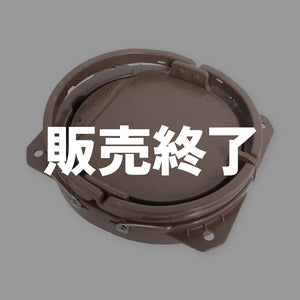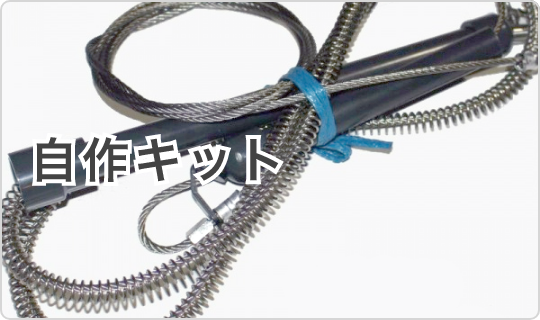When you think of hunting, the first thing that comes to mind is hunting with a gun. However, in addition to gun hunting using charged guns and air guns, there are other types of hunting such as "net hunting" using nets and "trap hunting" using traps.
Of these, trap hunting is easier to start than gun hunting, which requires strict screening and management. It is a hunting method that has been attracting attention in recent years because it is a hunting method.
However, trap hunting is never easy. A wide range of skills are required, such as reading the movements of prey from the traces left by the beast, knowledge of gimmicks and maintenance, and the technique of stopping stabs, and all you need to do is prepare traps for equipment and tools. not.
In this article, I will explain the equipment and tools necessary for trap hunting.
types of trapping
Trap hunting has a long history, beginning with pitfall hunting in the Paleolithic era and traps using falling rocks, which in a sense can be called brute force. As time goes on, even traps using ICT (information and communication technology) are now appearing.
*The use of tiger scissors is currently prohibited.
Even today, with the advancement of technology, the mainstream of trap hunting is "box trap" and "tie trap". These are well-established methods for effectively capturing beasts.
The difference from guns is the presence or absence of killing ability. The trap itself has no lethal ability. Therefore, it is necessary to use a technique of "stop stabbing" to kill the captured prey. Also, if necessary, it is necessary to consider dismantling the prey in advance.
* Reference article: ・About stopping captured animals (wild boars, deer, etc.)
・How to dismantle and handle deer [*Reading caution]
・How to dismantle and handle wild boars [*Reading caution]
What is a box trap?
A box-shaped or cage-shaped trap with an entrance that attracts prey with bait and closes the entrance when the prey enters.
It is possible to limit the movement of the captured prey, so the safety of the stabbing is high, and the bait is strongly attracted to the inside of the trap, so even if you have little knowledge about the beast, it is possible to capture it. is its advantage.
* Reference article: I want to know more about box trapsWhat is a tying trap?
It refers to a trap in which a metal wire rope loop (snare) is placed in the animal's path and a part of the prey's body is tied up to capture it.
Compared to box traps, they are cheaper, smaller and lighter, so they are easier to set in multiple places, and they do not require baiting. Because traps are set based on the beast's habits and movements, catching them is more difficult than with box traps.
Equipment and tools necessary for trap hunting
The preamble has become long, but from here I will explain the equipment and tools necessary for trap hunting.Start with clothes
Clothing is a matter of personal preference, but when working in areas where there is a risk of accidental shooting from a hunting rifle, it is recommended to wear a bright color such as orange as the outermost layer. Long sleeves are essential from the viewpoint of insect bites, sunburn, and injury prevention.
If you want to go on a road without a road, you should choose a sturdy one as much as possible. Also, at the beginning of the hunting season, there may still be many warm days, but even on such days, it is better to prepare warm clothes as much as possible. Quick-drying underwear is good so that you don't get cold even if you sweat.
A hunter's insignia (badge) is distributed every year when you register as a hunter.
As a precaution, it is a good idea to put your hunting registration card in a ziplock so that it is safe even if it gets wet.
You can read more about shoes in this article. Trap hunting often requires you to bend down all the time, so it is best to avoid shoes that are hard around the ankles.
The traps you set must be labeled.
When setting a trap, be sure to attach a tag with your name, address, phone number, hunter registration year, hunting license number, and prefecture where the license was issued. Don't forget to bring it with you when setting traps.
Labels are commercially available, but you can make your own as long as the required information is provided (detailed in the video below).
The sign must be placed in a position where it can be easily seen from the point where the trap is set. * Trees generally have owners. Do not damage it without permission, such as driving a nail into it.
Tools for setting and adjusting traps
A shovel (shovel) is commonly used in box traps and tying traps. Not only is it useful when digging holes to set up traps, but it is also useful when spreading bait for box traps, leveling the ground when setting box traps, and burying debris (internal organs after dismantling in the mountains). A shovel with a pointed tip is recommended so that you can dig up even hard ground.
If you can't dig with a shovel because the roots of the tree are in the way, a saw to cut the roots (we recommend a kama-saw that combines a sickle and a saw) and a hammer are useful.
In addition, prepare replacement parts and tools (swager, etc.) for tying traps, and replacement kick strings and bait for box traps. leave it.
Click here for the Kukuri Trap replacement parts sales page. >>
Measures against ticks and Yamabiru
Wild animals such as wild boars and deer are attached to ticks and wild animals, so where there are many wild boars and deer, there are also many ticks and wild animals.
When working in such a place, it is a place where you want to take measures as much as possible. It is safe to wear long gloves and spats made of synthetic fibers with good slipperiness, and repellent.
* Reference article: It's really scary. Tick infection "severe fever with thrombocytopenia syndrome (SFTS)"Other useful things
When entering the mountains, it is safe to have a GPS so you don't get lost. A smart phone climbing app will suffice. There are many other things that are convenient to have, such as waist bags for tools, headlights, knives, cameras, toilet paper, and first aid kits, but I would like to keep my luggage to a minimum.
This is not the correct answer, the above is just an example. What you need will vary depending on your hunting style and preferences, so it's a good idea to start with the bare minimum, and then increase the equipment as you go on.

 箱罠
箱罠
 くくり罠
くくり罠
 パーツ類
パーツ類
 電気柵
電気柵
 自作キット
自作キット
 防獣グッズ
防獣グッズ
 監視カメラ
監視カメラ







![Fare Asahi Shiki Monkey Box Trap [Single Door]](http://inohoi.jp/cdn/shop/products/2021-07-21T093626.944_300x300_crop_center.progressive.jpg?v=1628140528)
![Fare Asahi Shiki Small Animal Box Trap Small Size [Single Door]](http://inohoi.jp/cdn/shop/files/asahi-small02_071bc964-fa6b-4587-ae52-d15e905cc2c7_300x300_crop_center.progressive.png.jpg?v=1727766085)
![Fare Asahi Shiki Box Trap Big Size [Double Door]](http://inohoi.jp/cdn/shop/products/20180504_5c53af_300x300_crop_center.progressive.jpg?v=1597991101)
![Fare Asahi Shiki Box Trap Big Size [Single Door]](http://inohoi.jp/cdn/shop/products/20180506_c693cd_e969a0f5-abac-49ee-8f2b-6de0f385e3fd_300x300_crop_center.progressive.jpg?v=1597991123)
![Fare Asahishiki box trap medium size [single door] wire mesh specification](http://inohoi.jp/cdn/shop/files/main_300x300_crop_center.progressive.png.jpg?v=1720764665)
![Fare Asahi Shiki Box Trap Medium Size [Single Door] Deep Type](http://inohoi.jp/cdn/shop/files/f9d83dbb4ed93f76265b8cd23c07b474_300x300_crop_center.progressive.jpg?v=1726117508)



 box trap
box trap
 tying trap
tying trap
 enclosure trap
enclosure trap
 Prevention and avoidance goods
Prevention and avoidance goods
 electric fence
electric fence
 trap surveillance camera
trap surveillance camera
 transportation goods
transportation goods
 Trap detection sensor
Trap detection sensor
 hunting supplies
hunting supplies
 hunting books
hunting books
 Anti-bird goods
Anti-bird goods
 Agricultural materials/machinery
Agricultural materials/machinery
 boar
boar
 deer
deer
 Kyon
Kyon
 monkey
monkey
 raccoon
raccoon
 Badger
Badger
 palm civet
palm civet
 raccoon dog
raccoon dog
 nutria
nutria
 mouse or rat
mouse or rat
 Mole
Mole
 bear
bear
 pigeon
pigeon
 Crow
Crow







